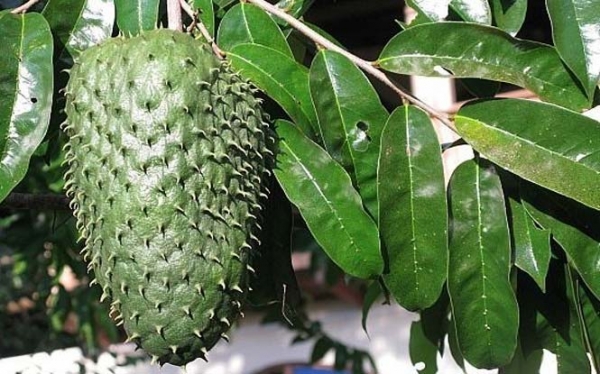May

Graviola - Superfood and Natural Medicine
All throughout the forests, jungles, and rural landscapes of Central and South America there grows a tree that has been valued for both it’s delicious and nutritious fruit, as well as it’s healing properties.
Annona Muricata, more commonly known as Graviola, is a small evergreen tree that produces a large edible fruit called Guanabana or Soursop. The leaves, bark, and roots of the tree, along with the seeds of the fruit, have been used by indigenous cultures and in folk medicine for centuries. The fruit is well-loved throughout the Americas and is often found in local markets and served in restaurants. A chilled, blended drink made from the pulp of the fruit is a favorite refreshment in many parts of Latin America.
Medicinal Properties
The medicinal properties of Graviola began to gain the attention of the public over the past decade, as researchers reported their findings - specifically the anti-tumorous and anti-cancerous properties of the leaves, bark, and seeds. According to Leslie Taylor, author of ‘The Healing Power of Rainforest Herbs' - “Annonaceous acetogenins are only found in the Annonaceae family (to which graviola belongs). These chemicals in general have been documented with anti-tumorous, antiparasitic, insecticidal, and antimicrobial activities. Mode of action studies in three separate laboratories have recently determined that these acetogenins are superb inhibitors of enzyme processes that are only found in the membranes of cancerous tumor cells. This is why they are toxic to cancer cells but have no toxicity to healthy cells.”
Other medicinal properties of Graviola that have been documented show that it is also - anti-bacterial, anti-cancerous, anti-convulsant, anti-depressant, anti-fungal, anti-malarial, anti-mutagenic (cellular protector), anti-parasitic, anti-spasmodic, anti-tumorous, cardiodepressant, emetic (causes vomiting), hypotensive (lowers blood pressure), insecticidal, sedative, uterine stimulant, vasodilator, anti-viral, cardiotonic (tones, balances, strengthens the heart), decongestant, digestive stimulant, febrifuge (reduces fever), nervine (balances/calms nerves), pediculicide (kills lice), vermifuge (expels worms).
Indigenous Traditions
Tribal cultures have respected and used basically all parts of the tree and fruit as part of their healing traditions. Ethnomedical uses of Graviola by indigenous peoples include - diarrhea, headaches, parasites, childbirth, abcesses, dysentery, edema, heart conditions, fever, skin conditions, indigestion, inflammation, depression, hypertension, asthma, nervousness, fungal infections, malaria, kidney problems, as a sedative, and many more uses.
Travelers exploring Latin America often find delight in the refreshing juice and fruit of the Guanabana. The fruit is quite juicy and filled with small inedible seeds. The flavor is slightly tart and sweet. Guanabana “batidos” are common in the markets of Central and South America. A “batido” typically includes blended fruit, water or milk, and sweetener. The fresh fruit can also be sliced and eaten out of hand. It is very refreshing and makes for a great treat in hot weather.
Superfood Fruit
As more research emerges and Graviola grows in popularity, many people are now labeling Guanabana a superfood fruit. The fruit is very high in antioxidants, including vitamin C. It also includes b vitamins, calcium, phosphorous, and iron.
Personally, I have eaten the fruit and drank tea made from the leaves of the tree. I find the fruit to be delicious and refreshing. The juice of the pulp helps to cool excessive heat and makes an excellent choice in hot, sticky weather. The tea from the leaves has a mild and pleasant taste. When I was healing my body from cancer I drank the tea daily for several months. For anyone traveling throughout Latin America you can commonly find dried Graviola leaves in public markets and botanical stores. People taking antihypertensive medications should check with their doctors before using Graviola and monitor their blood pressure accordingly (as medications may need adjusting).
Third-party documentation and research on Graviola be found at PubMed.







Kamar Gore
Added 30th March 2021
I grow these trees from seeds and send the leaves to those fighting cancer.